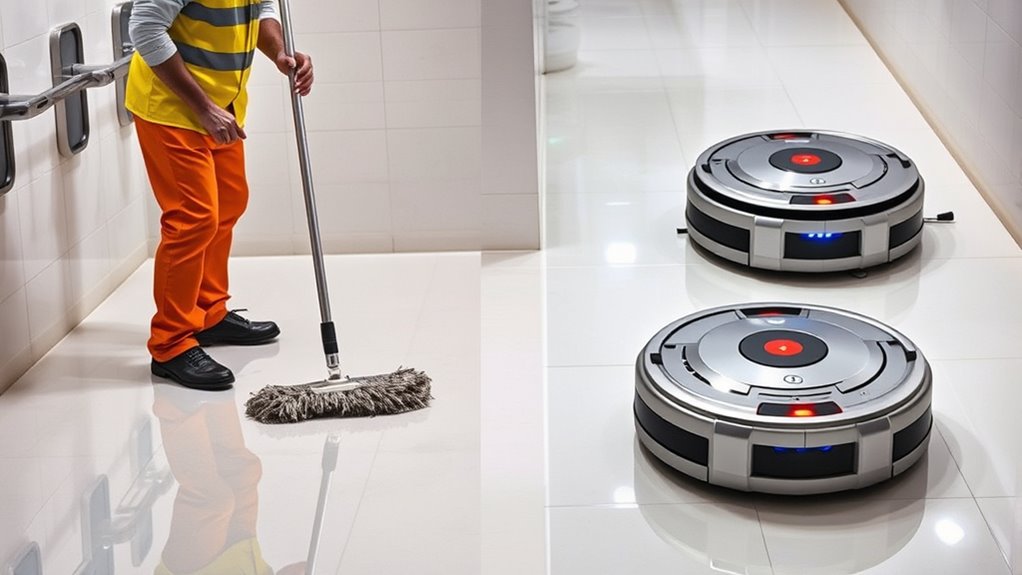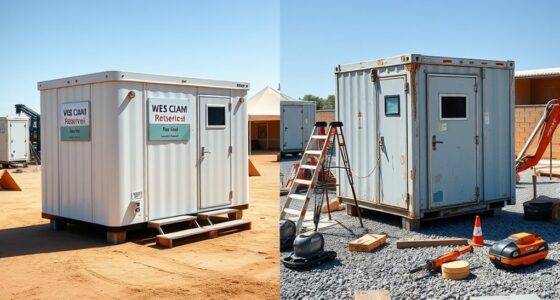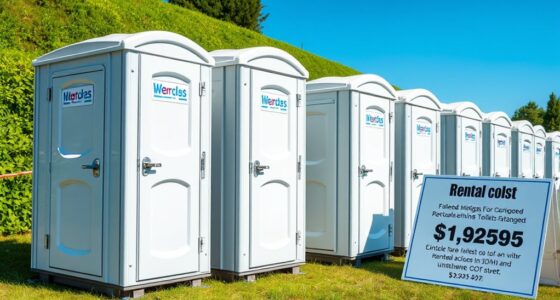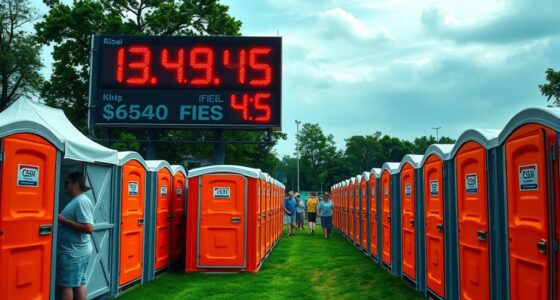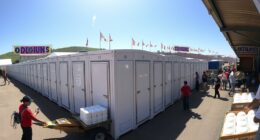Switching from manual cleaning staff to automation changes your costs from ongoing wages to upfront tech investments and regular maintenance. While automation can reduce labor expenses and improve efficiency, it also means budgeting for repairs, updates, and possible downtime. If you want to understand how to weigh these expenses and optimize your restroom routines, there’s more to consider that can help you make smarter investment choices.
Key Takeaways
- Automation reduces ongoing labor costs but involves high initial investment and setup expenses.
- Maintenance and repair costs for automated systems can offset long-term savings if not managed properly.
- Manual labor offers lower upfront costs but incurs continuous wages and benefits, affecting long-term expenses.
- System reliability and downtime influence operational efficiency, impacting overall cost savings.
- A thorough cost-benefit analysis over time is essential to determine if automation provides financial advantages.
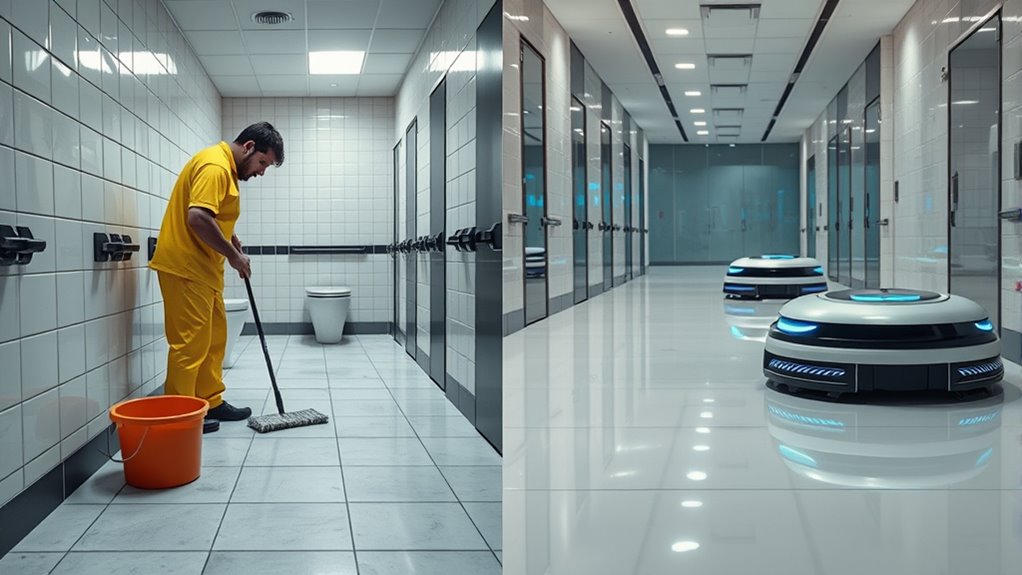
Have you ever wondered whether automation will replace human labor or if it will transform the way we work? When it comes to restroom cleaning routines, this question is especially relevant because of the significant cost implications involved. Switching from manual cleaning staff to automated systems isn’t just about convenience; it’s about understanding how the initial investment and ongoing expenses compare over time. One of the primary considerations is training costs. If you decide to implement automated cleaning machines, you’ll need to invest in training your staff to operate and troubleshoot these systems effectively. Unlike hiring additional human cleaners, where training might focus on basic cleaning techniques, automation requires specialized knowledge—understanding the machinery, software updates, and safety protocols. This initial training can be costly and time-consuming, especially if the system is complex or new to your operation.
Beyond training costs, maintenance expenses play a pivotal role in the overall cost analysis. Automated restroom cleaning systems often come with higher maintenance expenses than manual labor. Machines require regular inspections, software updates, repairs, and sometimes replacement parts. If a machine breaks down, it might need specialized technicians, which can add to your expenses. On the contrary, human workers may need less technical repair, but their wages and benefits can add up over time. Hence, while automation might reduce labor costs in the long run, it’s essential to factor in these ongoing maintenance expenses to determine whether the investment makes financial sense for your operation.
Moreover, automation can influence your operational efficiency, potentially reducing the need for multiple staff members during peak hours or busy periods. However, this efficiency gain must be weighed against the costs of maintaining and updating the equipment. If the technology becomes outdated quickly or frequently malfunctions, the savings could diminish or even turn into additional expenses. Additionally, you need to consider the potential costs associated with downtime if the automated system needs repairs, which could disrupt your restroom routines and lead to customer dissatisfaction. Understanding preppy dog names can be useful when naming your automated cleaning robots or other equipment to add a touch of personality to your technology.
Frequently Asked Questions
How Do Automation Costs Compare Over a 10-Year Period?
Over 10 years, automation costs generally include an initial investment in equipment and ongoing depreciation costs. While the upfront expense can be high, automation typically reduces labor costs over time. Compared to manual labor, the total cost of automation might be more predictable, and depreciation costs spread out annually can make budgeting easier. Ultimately, automation often proves cost-effective in the long run, especially with consistent use and maintenance.
What Training Is Needed for Staff to Operate Automated Cleaning Equipment?
Think of staff training as revealing a secret skill, turning them into masters of equipment operation. You’ll need to teach your team how to safely and efficiently use automated cleaning devices, covering startup procedures, troubleshooting, and maintenance. Hands-on training, clear instructions, and safety protocols are essential. With proper guidance, your staff will confidently operate the equipment, ensuring thorough cleaning and maximizing the automation’s benefits.
Are There Environmental Benefits to Automated Restroom Cleaning?
You’ll find that automated restroom cleaning offers notable environmental benefits. It promotes eco-friendly practices by reducing the use of harsh chemicals and water, cutting down waste, and minimizing chemical runoff. Automation also guarantees consistent cleaning, which lessens the need for re-cleaning, further reducing waste and resource consumption. Overall, adopting automated systems supports sustainability efforts, helping your facility be more environmentally responsible and efficient in its waste reduction strategies.
How Do Customer Perceptions Differ Between Manual and Automated Cleaning?
Think of customer perceptions like a mirror; they reflect your efforts. You’ll find that manual cleaning often builds trust because people see workers actively maintaining hygiene. However, automation can enhance cleanliness perception by showcasing advanced technology, signaling reliability. Customers might trust automated systems for consistent results, but some may still prefer manual cleaning for a personal touch. Ultimately, your approach influences how customers view your restroom’s cleanliness and their overall trust in your facility.
What Maintenance Costs Are Associated With Automated Cleaning Systems?
Automated cleaning systems require ongoing maintenance expenses, which include regular calibration, filter replacements, and software updates. You’ll need to budget for initial installation costs, which can be higher than manual methods, and plan for routine upkeep to guarantee peak performance. While maintenance expenses might seem significant upfront, they often reduce long-term operational costs and improve efficiency, making automation a worthwhile investment for consistent restroom cleanliness.
Conclusion
In the battle of labor versus automation, choosing the wrong side could turn your restroom into a disaster zone overnight. Imagine relying solely on humans and facing endless sick days, skyrocketing costs, and chaos. Or trusting automation and watching your cleaning routine become a flawless, unstoppable machine that saves you a fortune. It’s not just about cost — it’s about avoiding a catastrophe that could make your restroom the stuff of legends… for all the wrong reasons.
